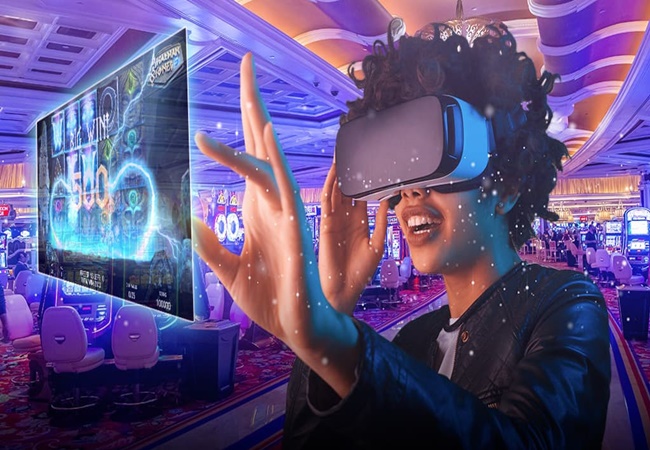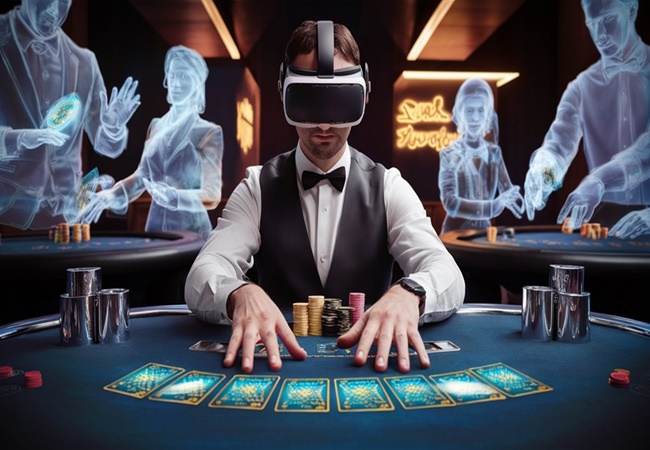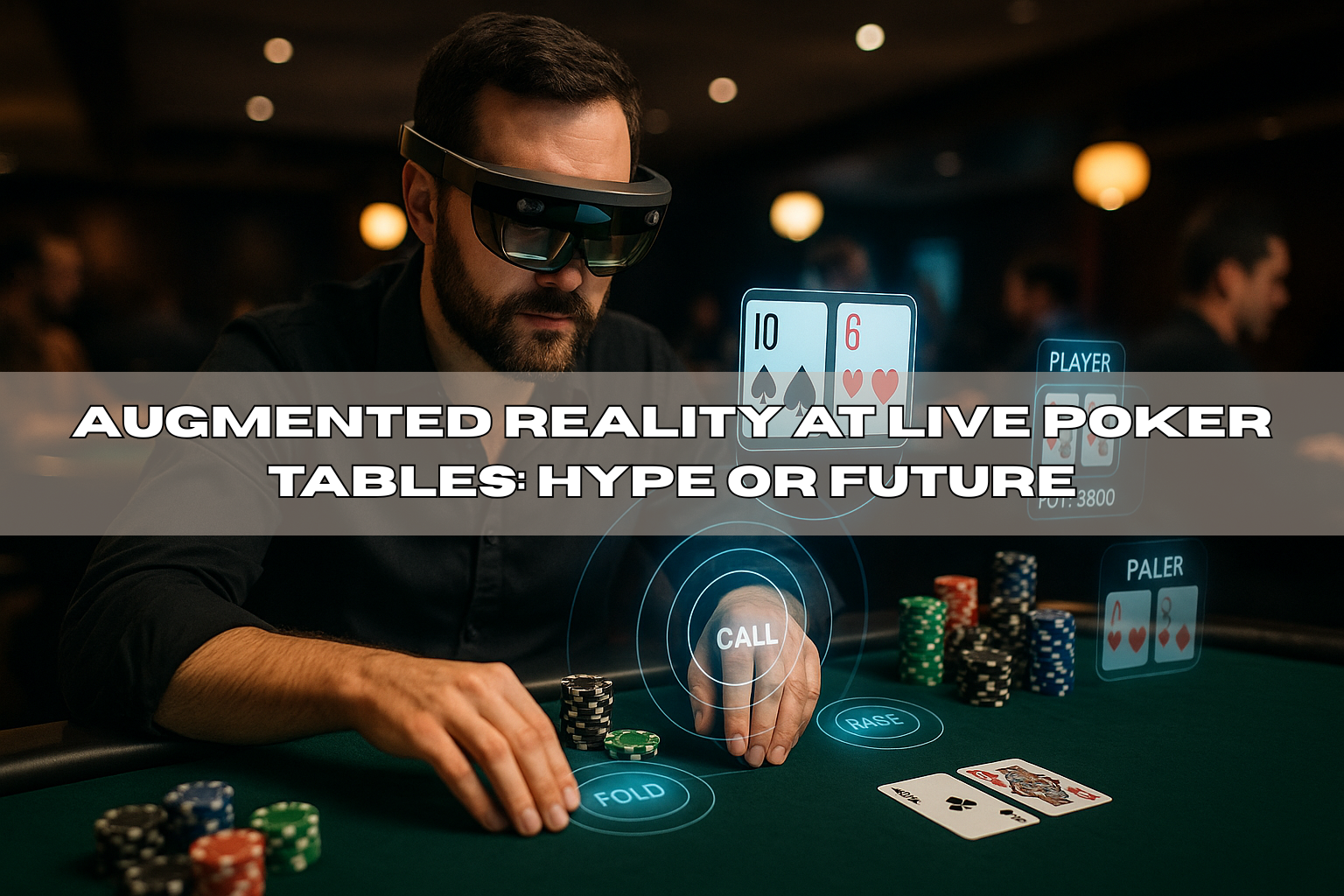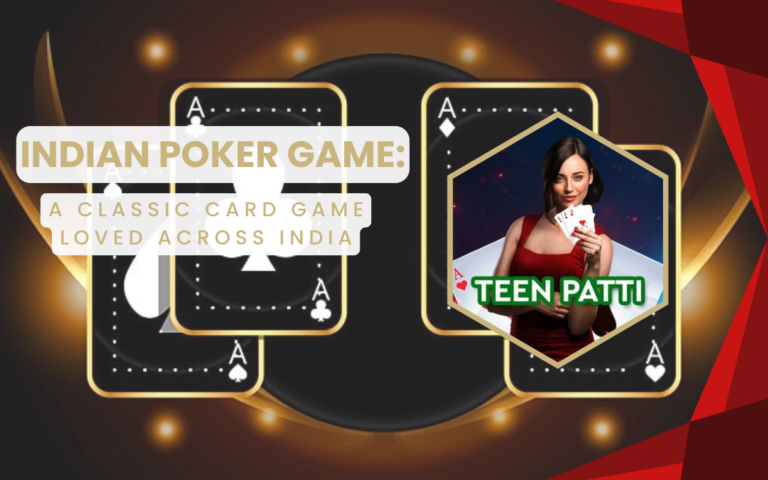Augmented Reality at Live Poker Tables: Hype or Future
In recent years, Augmented Reality (AR) has steadily moved from science fiction into mainstream applications — from education and healthcare to entertainment, gaming, and live poker. But what happens when this emerging technology meets one of the world’s most time-honored games: poker? As developers experiment with AR in casinos and poker rooms, the community is left asking: is AR at live poker tables just a fleeting trend or a game-changing evolution? In 2025, this question looms large, as early implementations in Rummy games hint at both exciting possibilities and complex challenges.

What Is Augmented Reality in the Poker Context?
Augmented Reality refers to overlaying digital elements — images, sounds, or data — onto the real world via headsets, glasses, or mobile screens. Unlike Virtual Reality (VR), which immerses users in a completely digital environment, AR enhances the real world—making it ideal for applications like live poker. In poker, this could mean:
- Displaying digital player stats and past hand histories above an opponent’s seat
- Visualizing pot odds and win probabilities directly on the table
- Creating immersive dealer and card animations without needing physical props
- Customizing the game ambiance with themes, lighting, or background soundscapes
- Enabling multi-language support or visual aids for accessibility in Teen Patti Stars
Early Experiments and Pilots
In 2024 and early 2025, several casinos in Las Vegas, Macau, and select tech-forward poker rooms in Europe started integrating AR elements into live poker games. Using devices like Microsoft HoloLens, Apple Vision Pro, and Meta’s smart glasses, players were given the opportunity to experience digital enhancements overlaid on traditional poker tables.
Some poker brands even collaborated with AR startups to design pilot games where the flop cards shimmered in 3D above the felt or where interactive HUDs (Heads-Up Displays) floated discreetly within a player’s field of view. In these experimental live poker settings, feedback has been mixed: some players appreciated the data-rich enhancements, while others found them distracting or overly complex.
Potential Benefits of AR in Poker
- Enhanced Strategic Depth
AR allows players to access real-time stats, hand histories, and positional insights, improving decision-making without slowing down the game. Casual players can learn through visual cues, while seasoned pros get quicker reads with digital overlays. - Customization and Accessibility
Players could change their viewing experience — dimming lights, increasing font sizes, or even translating dealer speech into text in real time. This makes poker career more inclusive for those with hearing or visual impairments, as well as for international players. - Increased Engagement
AR can gamify live poker with dynamic visuals — imagine flames erupting when someone goes all-in or confetti bursts after a big pot win. These visual cues heighten entertainment without altering the game’s core mechanics. - Efficient Game Flow and Security
AR can streamline dealer operations and enhance the experience for Poker streaming audiences. For example, automatic pot calculation, betting timelines, or rule clarifications can be displayed instantly to all players. It can also add anti-cheat protocols by digitally tracking chips and cards, reducing the risk of misdeeds or angle shooting.
Challenges and Concerns
- Cost and Accessibility
The biggest barrier is price. AR headsets are expensive, ranging from $1,000 to $3,500 depending on the model. Requiring players to wear them — or providing them in-house — creates an economic hurdle, particularly in lower-stakes games or casual environments. - Learning Curve and Distraction
For many, poker is already complex. Adding AR overlays, especially for recreational players, could overwhelm rather than assist. There’s also the issue of screen fatigue and how long someone can comfortably wear a headset during a long live poker tournament. - Fairness and Ethical Concerns
If one player uses advanced AR tools while another sticks to traditional play, does it create an unfair edge? Regulators will need to address questions around permissible data use and whether certain AR features give players an undue advantage. - Technical Reliability
AR systems rely on cameras, sensors, and connectivity — all of which can fail. Battery life, glitches, or syncing errors could disrupt gameplay, leading to disputes or unnecessary pauses at the table.
Player Reactions: Divided but Curious
In online forums and among poker professionals, opinions about AR at the poker table are split. Tech-savvy younger players, especially those from the Gen Z and Millennial demographics, are more open to trying AR-enhanced games. Many cite a desire for more immersive and modern poker experiences, especially with the rise of AI Poker Bots shaping the digital landscape.
However, purists and traditionalists tend to reject it outright. To them, poker is about psychological warfare, reading facial expressions, and subtle behavioral cues — things that may be obscured or lost behind AR glasses and digital overlays.

Casinos and Tournament Organizers: Cautious Exploration
Major poker organizers like the World Series of Poker (WSOP) and European Poker Tour (EPT) have not yet made AR a core part of their events. However, some have introduced AR experiences inside events or promotional booths to gauge interest. Casino operators are watching closely, balancing innovation with the need to maintain game integrity and avoid alienating older clientele.
An interesting compromise has emerged in private games and VIP rooms. High-rollers sometimes use custom AR environments to host private matches that blend luxury design, data-driven play, and entertainment. These setups often include AR-enhanced chips, 3D card animations, and AI-powered assistants, making them ideal for influencer-style broadcasts or streamed events.
Could AR Merge Live and Online Poker?
A more speculative — but highly intriguing — idea is that AR could eventually blur the line between live poker and online poker. Imagine sitting at a real poker table with empty chairs, but seeing remote players appear in AR holograms around you. They’d play live poker from their homes, and the entire experience would feel like a traditional game, but powered by digital interfaces.
This hybrid model could allow global participation in localized games without sacrificing the social experience. It may also solve logistical issues like travel costs or venue limitations, expanding the reach of major tournaments.
Hype or Future?
So, is AR at live poker tables just hype, or a glimpse into the future of the game? The answer is — it’s both.
In 2025, AR poker is still in its infancy. It’s a tech demo in some places and a curiosity in others. The cost, learning curve, and lack of standardization hold it back from mass adoption. However, its potential is undeniable. As AR devices become more affordable, lighter, and integrated into everyday life, VR Poker stands to benefit immensely from its capabilities.
Just like online poker once faced skepticism before becoming a multibillion-dollar industry, AR poker may follow a similar path — starting slow, growing niche communities, and eventually becoming a regular part of how live poker is played and enjoyed.
Final Thoughts: Augmented Reality at Live Poker Tables
Whether AR becomes a cornerstone of poker or a tech footnote will depend on a few key factors: affordability, player feedback, regulatory clarity, and above all, the ability to improve the game without compromising its essence. Poker has always evolved — from saloon tables and smoky backrooms to mobile apps and Twitch streams. Augmented Reality might just be its next shuffle.








